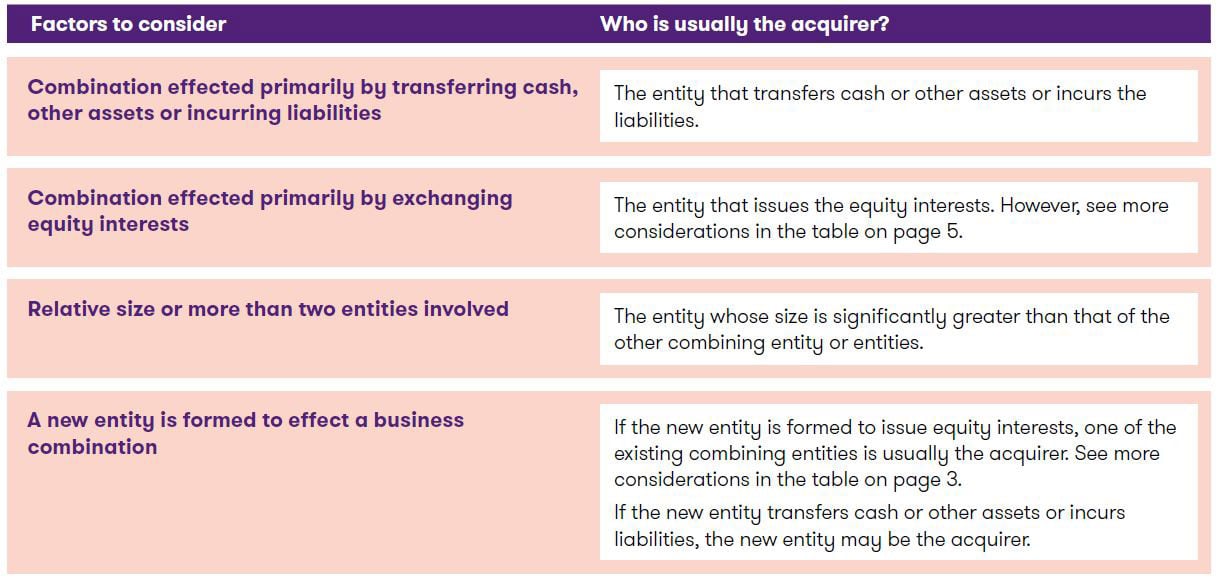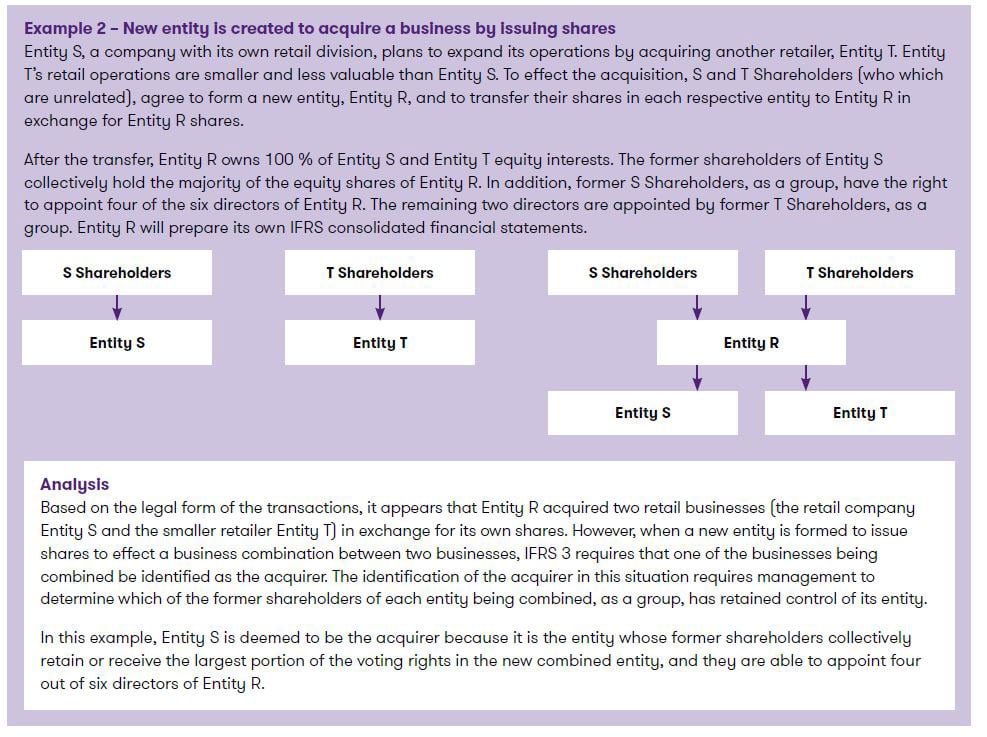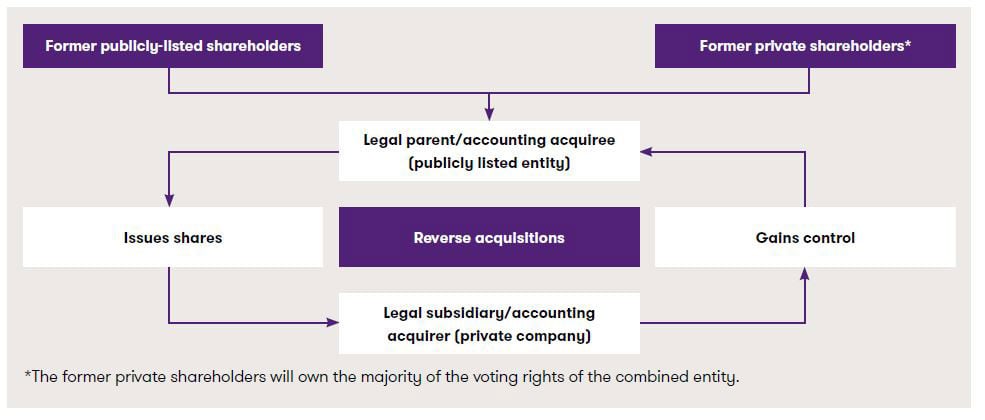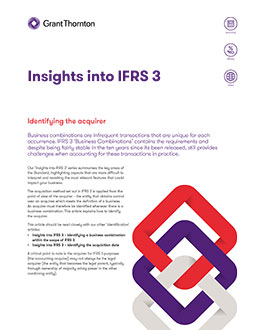-
Financial reporting and accounting advisory services
You trust your external auditor to deliver not only a high-quality, independent audit of your financial statements but to provide a range of support, including assessing material risks, evaluating internal controls and raising awareness around new and amended accounting standards.
-
Accounting Standards for Private Enterprises
Get the clear financial picture you need with the accounting standards team at Doane Grant Thornton LLP. Our experts have extensive experience with private enterprises of all sizes in all industries, an in-depth knowledge of today’s accounting standards, and are directly involved in the standard-setting process.
-
International Financial Reporting Standards
Whether you are already using IFRS or considering a transition to this global framework, Doane Grant Thornton LLP’s accounting standards team is here to help.
-
Accounting Standards for Not-for-Profit Organizations
From small, community organizations to large, national charities, you can count on Doane Grant Thornton LLP’s accounting standards team for in-depth knowledge and trusted advice.
-
Public Sector Accounting Standards
Working for a public-sector organization comes with a unique set of requirements for accounting and financial reporting. Doane Grant Thornton LLP’s accounting standards team has the practical, public-sector experience and in-depth knowledge you need.
-
Tax planning and compliance
Whether you are a private or public organization, your goal is to manage the critical aspects of tax compliance, and achieve the most effective results. At Doane Grant Thornton, we focus on delivering relevant advice, and providing an integrated planning approach to help you fulfill compliance obligations.
-
Research and development and government incentives
Are you developing innovative processes or products, undertaking experimentation or solving technological problems? If so, you may qualify to claim SR&ED tax credits. This Canadian federal government initiative is designed to encourage and support innovation in Canada. Our R&D professionals are a highly-trained, diverse team of practitioners that are engineers, scientists and specialized accountants.
-
Indirect tax
Keeping track of changes and developments in GST/HST, Quebec sales tax and other provincial sales taxes across Canada, can be a full-time job. The consequences for failing to adequately manage your organization’s sales tax obligations can be significant - from assessments, to forgone recoveries and cash flow implications, to customer or reputational risk.
-
US corporate tax
The United States has a very complex and regulated tax environment, that may undergo significant changes. Cross-border tax issues could become even more challenging for Canadian businesses looking for growth and prosperity in the biggest economy in the world.
-
Cross-border personal tax
In an increasingly flexible world, moving across the border may be more viable for Canadians and Americans; however, relocating may also have complex tax implications.
-
International tax
While there is great opportunity for businesses looking to expand globally, organizations are under increasing tax scrutiny. Regardless of your company’s size and level of international involvement—whether you’re working abroad, investing, buying and selling, borrowing or manufacturing—doing business beyond Canada’s borders comes with its fair share of tax risks.
-
Succession & estate planning
Like many private business owners today, you’ve spent your career building and running your business successfully. Now you’re faced with deciding on a successor—a successor who may or may not want your direct involvement and share your vision.
-
Tax Reporting & Advisory
The financial and tax reporting obligations of public markets and global tax authorities take significant resources and investment to manage. This requires calculating global tax provision estimates under US GAAP, IFRS, and other frameworks, and reconciling this reporting with tax compliance obligations.
-
Transfer pricing
Recognized as a leader in the transfer pricing community, our award-winning team can help you expand your business beyond borders with confidence.

-
Transactions
Our transactions group takes a client-centric, integrated approach, focused on helping you make and implement the best financial strategies. We offer meaningful, actionable and holistic advice to allow you to create value, manage risks and seize opportunities. It’s what we do best: help great organizations like yours grow and thrive.
-
Restructuring
We bring a wide range of services to both individuals and businesses – including shareholders, executives, directors, lenders, creditors and other advisors who are dealing with a corporation experiencing financial challenges.
-
Forensics
Market-driven expertise in investigation, dispute resolution and digital forensics
-
Cybersecurity
Viruses. Phishing. Malware infections. Malpractice by employees. Espionage. Data ransom and theft. Fraud. Cybercrime is now a leading risk to all businesses.
-
Consulting
Running a business is challenging and you need advice you can rely on at anytime you need it. Our team dives deep into your issues, looking holistically at your organization to understand your people, processes, and systems needs at the root of your pain points. The intersection of these three things is critical to develop the solutions you need today.
-
Creditor updates
Updates for creditors, limited partners, investors and shareholders.

-
Governance, risk and compliance
Effective, risk management—including governance and regulatory compliance—can lead to tangible, long-term business improvements. And be a source of significant competitive advantage.
-
Internal audit
Organizations thrive when they are constantly innovating, improving or creating new services and products and envisioning new markets and growth opportunities.
-
Certification – SOX
The corporate governance landscape is challenging at the best of times for public companies and their subsidiaries in Canada, the United States and around the world.
-
Third party assurance
Naturally, clients and stakeholders want reassurance that there are appropriate controls and safeguards over the data and processes being used to service their business. It’s critical.
-
 Assurance Important changes coming to AgriInvest in 2025AgriInvest is a business risk management program that helps agricultural producers manage small income declines and improve market income.
Assurance Important changes coming to AgriInvest in 2025AgriInvest is a business risk management program that helps agricultural producers manage small income declines and improve market income. -
 Tax alert Agricultural Clean Technology ProgramThe Agricultural Clean Technology Program will provide financial assistance to farmers and agri-businesses to help them reduce greenhouse gas (GHG) emissions.
Tax alert Agricultural Clean Technology ProgramThe Agricultural Clean Technology Program will provide financial assistance to farmers and agri-businesses to help them reduce greenhouse gas (GHG) emissions. -
 Tax alert ACT Program – Research and Innovation Stream explainedThe ACT Research and Innovation Stream provides financial support to organizations engaged in pre-market innovation.
Tax alert ACT Program – Research and Innovation Stream explainedThe ACT Research and Innovation Stream provides financial support to organizations engaged in pre-market innovation. -
 Tax alert ACT Program – Adoption Stream explainedThe ACT Adoption Stream provides non-repayable funding to help farmers and agri-business with the purchase and installation of clean technologies.
Tax alert ACT Program – Adoption Stream explainedThe ACT Adoption Stream provides non-repayable funding to help farmers and agri-business with the purchase and installation of clean technologies.
-
Builders And Developers
Every real estate project starts with a vision. We help builders and developers solidify that vision, transform it into reality, and create value.
-
Rental Property Owners And Occupiers
In today’s economic climate, it’s more important than ever to have a strong advisory partner on your side.
-
Real Estate Service Providers
Your company plays a key role in the success of landlords, investors and owners, but who is doing the same for you?

-
Mining
There’s no business quite like mining. It’s volatile, risky and complex – but the potential pay-off is huge. You’re not afraid of a challenge: the key is finding the right balance between risk and reward. Whether you’re a junior prospector, a senior producer, or somewhere in between, we’ll work with you to explore, discover and extract value at every stage of the mining process.
-
Oil & gas
The oil and gas industry is facing many complex challenges, beyond the price of oil. These include environmental issues, access to markets, growing competition from alternative energy sources and international markets, and a rapidly changing regulatory landscape, to name but a few.
Identifying the acquirer
Business combinations are infrequent transactions that are unique for each occurrence. IFRS 3 ‘Business Combinations’ contains the requirements and despite being fairly stable in the ten years since it’s been released, still provides challenges when accounting for these transactions in practice.
Our ‘Insights into IFRS 3’ series summarizes the key areas of the Standard, highlighting aspects that are more difficult to interpret and revisiting the most relevant features that could impact your business.
The acquisition method set out in IFRS 3 is applied from the point of view of the acquirer – the entity that obtains control over an acquiree which meets the definition of a business. An acquirer must therefore be identified whenever there is a business combination. This article explains how to identify the acquirer.
This article should be read closely with our other ‘identification’ articles:
- Insights into IFRS 3 – Identifying a business combination within the scope of IFRS 3
- Insights into IFRS 3 – Identifying the acquisition date
A critical point to note is the acquirer for IFRS 3 purposes (the accounting acquirer) may not always be the legal acquirer (the entity that becomes the legal parent, typically through ownership of majority voting power in the other combining entity).
What is IFRS 3’s approach to identifying the acquirer?
IFRS 3 initially directs an entity to IFRS 10 ‘Consolidated Financial Statements’ to identify the acquirer, and to consider which entity controls the other (i.e. the acquiree). In most business combinations identifying the acquirer is straightforward and is consistent with the transfer of legal ownership. However, the identification can be more complex for business combinations when:
- businesses are brought together by contract alone such that neither entity has legal ownership of the other
- a combination is affected by legal merger of two or more entities or through acquisition by a newly created parent entity
- there is no consideration transferred (combination by contract), or
- a smaller entity arranges to be acquired by a larger one.
In these more complex situations, IFRS 3 takes an in-substance approach to identifying the acquirer rather than relying solely on the legal form of the transaction. This in-substance approach looks beyond the rights of the combining entities themselves. It also considers the relative rights of the combining entities’ owners before and after the transaction. Combinations where the acquirer of a business is the acquiree rather than the acquirer are reverse acquisitions and IFRS 3 provides specific guidance on how to account for these. Refer to page 6 for more details. This means if, when applying the control guidance in IFRS 10, it is not clear which of the entities being combined is the acquirer, entities should revert back to IFRS 3 which provides the following additional indicators to consider:

Examples involving the creation of a new entity
In practice, one of the most common situations where the process of identifying the acquirer requires a more in-depth analysis is when a new entity is formed to bring about a business combination. This can be done in many ways and sometimes can result in a ‘reverse acquisition’ which is explained on page 6. Below are situations of when a new entity might be formed to bring about a business combination:


“IFRS 3 initially directs an entity to IFRS 10 ‘Consolidated Financial Statements’ to identify the acquirer, and to consider which entity controls the other (i.e. the acquiree).”
Business combination effected by exchanging equity interests
When considering a combination effected primarily by exchanging equity interests, other factors and circumstances shall also be considered such as:

It is important to note there is only ever one acquirer in a business combination. In those that involve more than two entities, it is important to consider which entity initiated the combination and the relative size of the combining entities.
Example 3 – Merger of four companies and their relative voting rights
Four companies decide to group their businesses and to do so, they decided to merge together and form NewCo. This is
to create economies of scale. Each company has agreed to contribute their business to NewCo in exchange for shares in
NewCo. The characteristics of the four companies are as follows:
- all 4 companies run independent cafés all in the same region
- Company A runs 3 café’s and Company’s B, C and D have one each
- Company A is given 40% of the voting rights, and B, C and D are given 20% each, and
- there are no other factors to indicate who the acquirer is.
In this situation, Company A is the acquirer. Usually, the entity whose owners obtain the largest portion of the capital of the combined entity generally also has the ability to elect the majority of the members to the governing body.
Reverse acquisitions
Another common situation where the process of identifying the acquirer requires some in-depth analysis is when shares are exchanged, and the result is that the accounting acquirer is not the legal acquirer. Normally it is the entity who issues shares to acquire a business who obtains the control of the business it acquired. It is then identified as the acquirer. However, it could happen that following the issuance of the shares by the entity (legal acquirer), it is instead the legal subsidiary that is identified as the acquirer. These are known as reverse acquisitions.
One situation in which reverse acquisitions often arise is when a private operating entity is looking for a fast-track to a public listing. To accomplish this, the private entity arranges for its equity interests to be acquired by a smaller, publicly-listed entity. The listed entity effects the acquisition by issuing shares to the owners of the private operating entity. After the exchange of shares, the former shareholders of the private entity, as a group, hold the majority of the voting rights of the combined entity. In addition, the former shareholders of the private entity have appointed the majority of the members of the new combined entity’s board. In this case, although the publicly listed entity issued shares to acquire the private entity, the listed entity will be identified as the accounting acquiree and the private entity as the accounting acquirer. This is because the former shareholders of the private entity, as a group, have retained control over the private entity.

The accounting for reverse acquisitions depends on whether the accounting acquiree is a business. When the accounting
acquiree is a business, the recognition and measurement principles in IFRS 3 apply, including the requirement to recognize
goodwill. If the accounting acquiree is not a business, then it is outside the scope of IFRS 3. As this topic is a challenging one in practice, we have a published separate guidance on this, including examples, as follows:

Business combinations by contract alone
When a business combination is achieved by contract alone, such as a stapling arrangement, with no combining entity obtaining control of the other combining entities, the acquirer should usually be the combining entity whose owners (as a group) receive the largest portion of the voting rights in the combined entity. This matter was considered by the IFRIC and an agenda decision confirming this accounting treatment was issued in May 2014.

